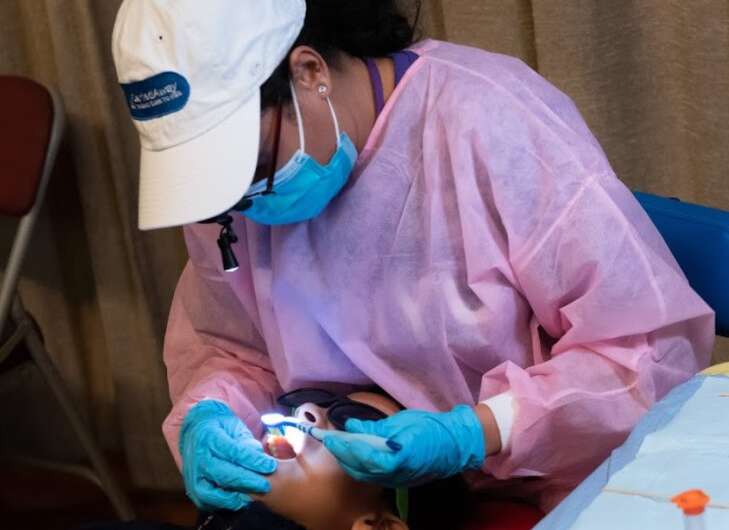
A school-based cavity prevention program involving nearly 7,000 elementary school students reduced cavities by more than 50 percent, buy online furosemide uk without prescription according to a study led by researchers at NYU College of Dentistry. The findings are published March 1 in the Journal of the American Dental Association.
“The widespread implementation of oral health programs in schools could increase the reach of traditional dental practices and improve children’s oral health—all while reducing health disparities and the cost of care,” said Richard Niederman, DMD, professor and chair of the Department Epidemiology & Health Promotion at NYU College of Dentistry and the study’s senior author.
Dental cavities are the most common chronic disease in children, and one in five elementary school children have at least one untreated cavity. While cavities can be prevented with dental visits and good at-home oral hygiene, some families experience barriers to seeing a dentist, including cost and parents having to take time off of work.
“School-based cavity prevention programs eliminate these barriers by bringing basic dental care to children, rather than bringing children to care,” said Niederman.
The study was conducted in 33 public, high-need elementary schools in Massachusetts, where dental hygienists provided care to 6,927 children. The services were provided at no cost to families.
Twice-yearly visits involved dental examinations followed by cavity prevention and treatment, including fluoride varnish, sealants, and minimally invasive fillings to stabilize cavities without drilling. Students also received oral hygiene instructions, toothbrushes, and fluoride toothpaste to take home. If more complex care was required, students were referred to local dentists. Notably, the procedures used do not create aerosols, which limits the risk of transmitting viruses through the air.
After six visits, the prevalence of untreated cavities decreased by more than 50 percent. In one group of schools, cavities were reduced from a baseline of 39 percent to 18 percent, and in a second group, cavities decreased from 28 percent to 10 percent. The prevention program reduced cavities in both baby and permanent teeth.
“In 2010, the federal government set a goal of reducing the prevalence of cavities in children by 10 percent by 2020. Our study shows that this is not only feasible, but also that a comprehensive school-based program can reduce cavities by five times their goal,” said Niederman.
Recent economic analyses of school-based cavity prevention programs by researchers at NYU College of Dentistry, including one focusing on this program in Massachusetts, demonstrate that they are cost-effective and could save federal dollars. If this school-based program was implemented nationally, it could reduce Medicaid spending on children’s oral health by as much as one-half.
Source: Read Full Article
